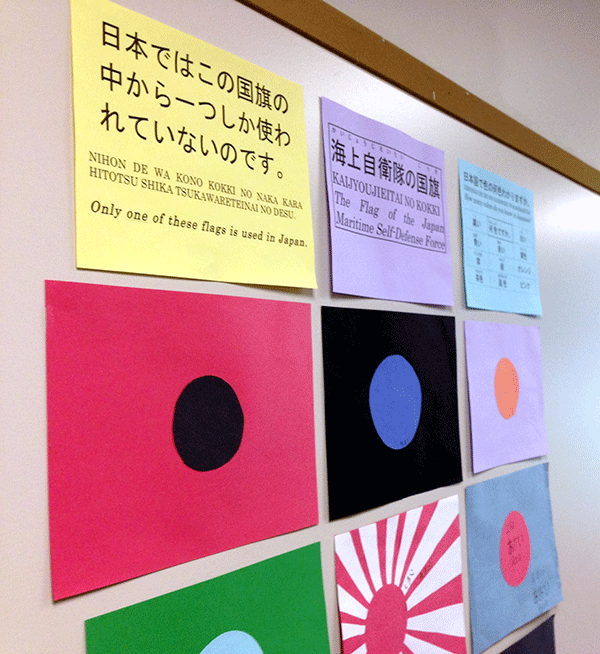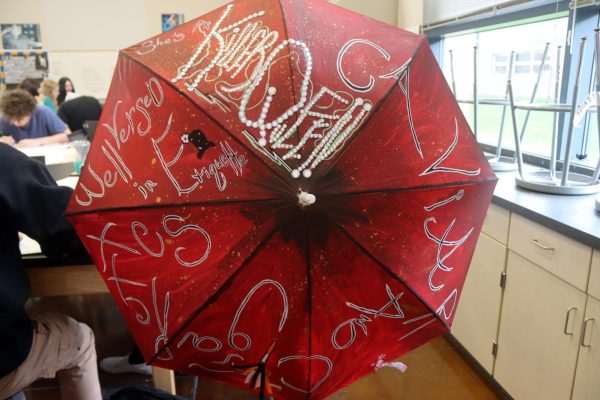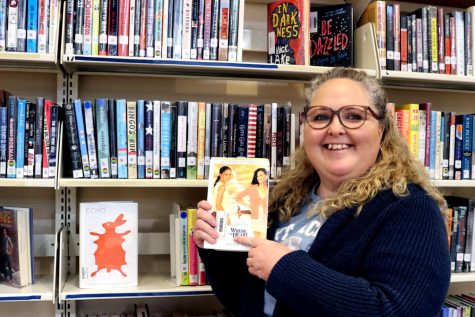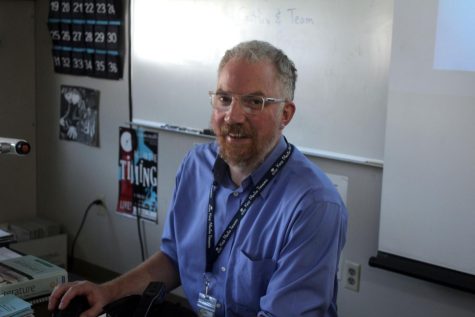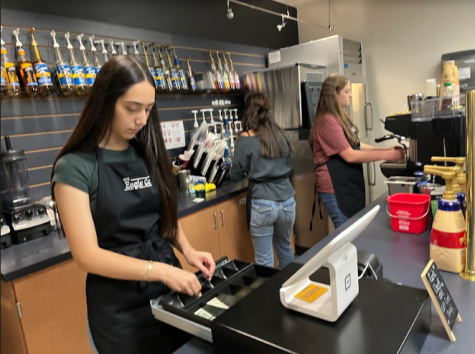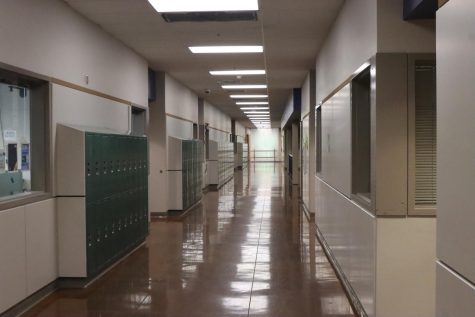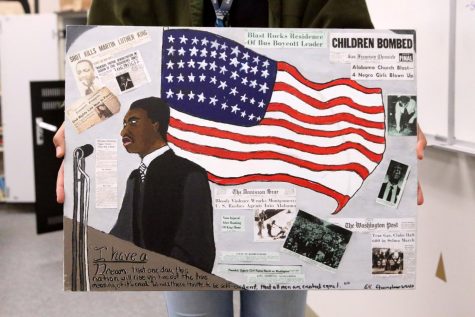New Dawn for the Language of the Rising Sun
This art was one of the earliest assignments in the new Japanese class. These posters can be seen at the end of the C-wing hallway. Mr. Anderson, the instructor, stated that he had thought of being a Japanese teacher since High school , “so you could say I have my dream job”, he said.
First year, first period, first semester. Everything feels fresh for Arlington’s new Japanese class. With the previous Japanese teacher departing five years ago, this marks the first time current students have experienced the presence of a fourth world language.
Mr. Anderson, the instructor, is quite excited to be teaching Japanese. Prior to this year, he had only taught briefly and informally, through things like internships and last year’s Japanese Club, for instance. Things appear to have started well, and he is encouraged by healthy enrollment. Around thirty students signed up, which he noted “is very good for a first-year elective”. “And these kids who’ve signed up are very motivated to learn”, he added.
As to be expected with a language so disparate from our own, much of the initial focus of the class is learning to write, specifically learning the “Hiragana” character set. Mr. Anderson concedes that, with the introductory writing stage, “some students need more contextual activities”. “It’s a long story to explain the history of the characters, but useful for understanding its purpose”, he said.
The unforgiving nature of Japanese isn’t aided by the textbook, which lacks Romanization (the rendering of Japanese characters phonetically with our alphabet). However, during the potentially frustrating starting period, the course is opening up into immediate phenomena experienced by students. “Everyday at the beginning of class, we describe the weather”, he offered as an example.
Most language courses are structured this way, around “student centered learning”, meaning that students first learn about the things in their close environment and gradually work out broader, focusing then on more global and abstract concepts. In spite of this design, the students appear to have an atypical focus on the Japanese culture from the outset. Mr. Anderson interprets the discussions that arise, where students are eager to share and clarify their perceptions of the culture, as positive. “So there is a lot of English at this stage”, he said regarding the conversations. “But it will be beneficial down the road with understanding the nuances of the language, and how culture and these things are embedded”.
In the coming years, Mr. Anderson plans to drop one Spanish II class each year to accommodate the advancing students, until there are classes for years one, two, and three/four.
Even though the air of newness around Japanese will inevitably subside, a feeling of completeness will take its place. Broadened horizons have an odd way of making Arlington feel closer.



